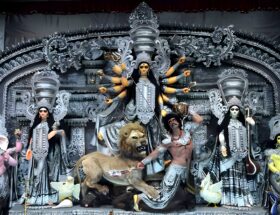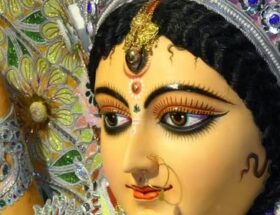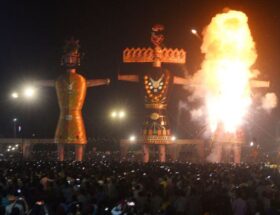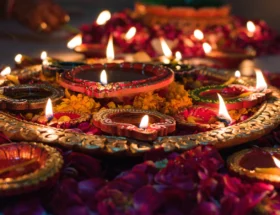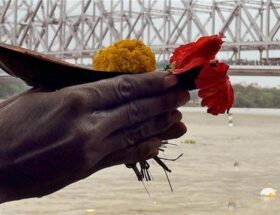Guru Tse-Chu: A Fête Celebrated in the Honor of Guru Rinpoche
Introduction of Guru
The Guru Tse-Chu Festival is one of the most significant religious festivities in Bhutan. The program features the revered Guru Rinpoche, commonly known as Padmasambhava, and the festival draws immense cultural and spiritual values that attract both locals and tourists. Several colorful masked dances, extended rituals, and a pious atmosphere epitomize the festival. Distinct monasteries across Bhutan observe the festival.
Guru Tse-Chu History
According to oral traditions, Guru Tse-Chu traces its origin to the 8th century when Guru Rinpoche, “Precious Master,” visited Bhutan. He propagated Buddhism in Bhutan and subdued most of the local deities that were hostile to the propagation of the religion. Today, Guru Tsechu is a representation of victory over evil. This function has bred and developed so much through this time that it is inlaid into the very fabric of Bhutanese culture.
The Gory Masked Dances of Guru Tse-Chu
The next in line before Guru Tse-Chu is a series of Cham dances— graceful, glittering in the most glamorous masks and decorated costumes— enacted by the monks and laymen themselves. Different episodes of life with various deities and demons of Guru Rinpoche are all expressed through the dances. All the dances describe some kind of deep truth symbolism: generally, the victory of good over evil, that life is quick-moving, and other themes, such as spiritual awakening. The dances are done meticulously and gracefully, and the whole atmosphere gets filled with the feel of mysticism and devotion.
Rituals and Offerings at Guru Tse-Chu
In addition to the Cham dances, Guru Tse-Chu takes in several other rituals and offerings. The subsequent step of the ritual comprises sacred rites by the monks that target ushering in an environment of blesses, peace, and prosperity in society. The offerings to the deities with food, incense, and butter lights, along with a wish or prayer, follow in the festival. This is supposed to purify everyone from misdeeds, repel evil influence, and secure a prosperous New Year. It finishes off by bringing out a colossal Thangka that is merely a blessed scroll painting, giving spiritual blessings to anyone who makes an eye upon this masterpiece.
The Cultural Significance of Guru Tse-Chu Festival
Substantially, Guru Tse-Chu is not just a religious ceremony at all but also eminent in cultural values. The basic idea of this event is to bring the communities closest to one other. It tends to source and exemplifies the example of a conversation, a passageway of generations through dances, musical patterns, or even crafts of Bhutanese tradition. Social bonding is created within the event whereby families and friends gather to celebrate. During this time, visitors can discover Bhutan’s cultural heritage and explore spiritual practices.
How one can experience Guru Tse-Chu
Experiences during Guru Tse-Chu will be a collection if one arrives in Bhutan during autumn. The event is held in multiple venues with Paro and Thimphu Tse-Chu being the most celebrated. One has to dress appropriately, show respect by following the rites. They usually allow photographs but ask before snapping sacred dances and ceremonies, as some points may not be allowed.
Conclusion: Savor Guru Tse-Chu in Spirit
The Guru Tse-Chu is more than a festival. This intense spiritual practice showcases Bhutan’s rich religious and cultural heritage through live rituals and mask dances, delivering spiritual lessons characteristic of Bhutanese tradition Guru Tse-chu is our Himalayan way of life a symbol of a memorable half, beloved by fans, travelers and locals alike.
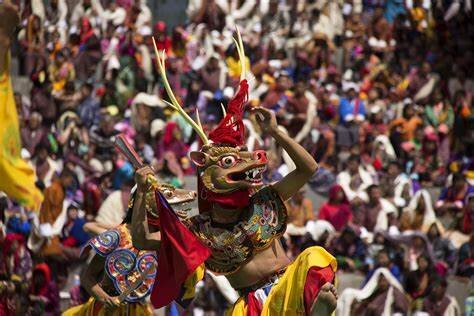
Sarees that women can wear in this festival: Grayish-Blue Licchi Silk Saree
FAQs on Guru Tse-Chu
1. What exactly is Guru Tse-Chu?
People celebrate Guru Tse-Chu as one of the most important Buddhist festivals, and they more popularly know it as Guru Rinpoche Day.
The Tibetan Buddhists instituted this festival in memory of Guru Padmasambhava, who founded Tibetan Buddhism. The festival normally falls on the 10th day of the Tibetan month.
2. When do people celebrate Guru Tse-Chu?
Guru Tse-chu is celebrated on the 10th day of the Tibetan lunar month. It usually occurs in August and September according to the Gregorian calendar.
3. Who was Guru Padmasambhava?
Guru Padma Sambhava, better known as Guru Rinpoche, brought Buddhism to Tibet as an eighth-century Tibetan teacher, received the title Buddha II in Tibetan teachings and miracles, and became the most famous figure in Tibetan Buddhism.
4. Which principal activities are there for this festival?
These are varied in many prayers and offerings, reciting of the Holy Scripts, among others. Besides this, in most of the monasteries and Buddhist communities, they used to hold special ceremonies with traditional dances and ‘thangkas’—that is, the religious rolls representing either how Guru Padmasambhava looks or his life story.
5. What does Thanksgiving mean at the festival?
Enormous religious paintings, known as thangkas, portray the pictures of Guru Padma Sambhavam. During the time of Guru Tse-chu, people fold and display a tribute of respect and remembrance for all the lessons and wonders of Guru Rinpoche.
6. How do people celebrate Guru Tse-Chu?
The people celebrate by making offerings and doing rituals along with traditional dances in a monastery. Of course, visiting pilgrims do visit the temple and the monasteries to join in with those ceremonies.
7. What’s Guru Tse-Chu in general on Tibetan Buddhism?
The benefit is based on a real reminder to people around the world of the knowledge and work of Guru Padma Sambhava, and highlights his teachings and contribution to the spread of Zen Buddhism in Tibet.
8. What is the perception of tradition dances role do you think in this festival?
Guru Tse-Chu consists of major traditional dances. These are usually spiritual stories and a way of paying tribute or offering homage to Guru Padmasambhava by performance arts.
9. Can a non-Buddhani approach Guru Tse-chu, and how else can he receive an invitation?
Yes, people normally celebrate the festival of Guru Tse-Chu, and non-Buddhists are the guests of the event. They feel even more welcome when towns host the event openly, which makes individuals aware of Tibetan culture and Buddhism.
10. Why is Guru Tse-Chu an important part of Tibetan culture?
This safeguards the spirits and the culture of the Tibetans. It forms one of the days of exulting protected from the most important Tibetan Buddhist festivals and therefore protects the traditional behaviours of Tibetans. It also helps create for them a community and cultural trousseau of the Tibetan Buddhists.

